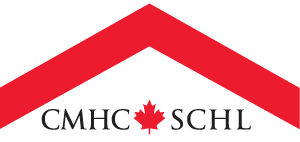In our new baseline scenario based on information as of June 26, 2025, bilateral U.S. – Canada trade tariffs will peak in the second half of the year. They will then gradually decline by the second half of 2026 as trade agreements are expected to be reached. U.S. tariffs on other countries will follow a similar pattern, reducing global demand more in the short-term. This will affect Canada's economy in 2025. Following a likely modest recession this year, the gross domestic product should begin to recover in early 2026. Our weaker growth scenario is found in the forecast table below.
Three factors are already contributing to this slowdown and will continue to do so in the near term:
- price pressures
- lower demand
- uncertainty
The trade environment along with the possible impacts of geopolitical events will push inflation back up, peaking just above the 3% mark by mid-2026. The unemployment rate is also forecast to increase slightly by this fall. Our market intelligence confirms that uncertainty is widespread.
For firms directly and indirectly affected by tariffs, lower demand and revenue from abroad will continue to reduce labour demand leading to weaker labour markets, while the heightened uncertainty slows down investment. Additionally, supply chain disruptions from trade policy uncertainty and higher tariffs will be costly and will drive prices up. For households, the prospect of job losses and rising prices will continue to curb consumption. Despite more favourable borrowing costs and conditions, home buying won’t be spared from this uncertainty.
These economic pressures are unfolding alongside an inflation outlook that remains higher than in the Housing Market Outlook’s medium scenario, even with a likely mild recession expected. As a result, our view on the policy rate has not changed. It should decrease slightly in 2025 and rise starting in 2027 to the midpoint of the neutral range. Meanwhile, bond yields and mortgage rates were lower than we expected in the first half of 2025. We expect them to stay below our Outlook’s forecast in the second half of the year as well. The 5-year fixed mortgage rates will gradually increase to a long-term rate of 5.5%. Variable-rate mortgages, tied to the policy rate, will remain more attractive to homebuyers.
We have left our demographic outlook unchanged. Lower immigration targets will be met gradually and will slow economic growth over the forecast horizon.
A softer housing market in 2025 will start to recover next year
Housing activity has weakened since January. Many home buyers and developers are taking a “wait‑and‑see” approach amid weaker economic growth and lingering trade tensions. Resale markets have softened, especially in Ontario and British Columbia, while Alberta shows signs of cooling. Quebec’s housing activity has slowed less than in other parts of Canada, supported by more market momentum and more stable buyer sentiment. Overall, our current housing forecast in 2025 is increasingly aligned with the Housing Market Outlook’s low scenario in the near term which highlights growing downside risks to the outlook.
Home prices are drifting lower in areas where demand has weakened, and listings have increased. We now expect the Canadian average home price to decline by about 2% this year, with larger drops in Ontario and British Columbia where high prices and reduced investor activity in the condominium market continue to weigh on demand. We expect a recovery in 2026 as economic fundamentals and confidence improve. However, housing starts are likely to respond more slowly, as developers remain cautious and financing conditions stay tight.
Multi-unit construction will remain elevated by historical standards, but regional variations will remain. Construction will generally stay strong in Atlantic Canada, the Prairies and Quebec. In contrast, starts will decline sharply in Ontario and British Columbia, where high housing prices, rising construction costs and low investor confidence are weighing heavily on new builds, especially condos. Many condo projects are delayed, cancelled or converted to rentals. Developers are missing presale targets, and unsold inventory is rising. Falling prices and tighter credit are creating risks for buyers. These challenges are likely to persist through 2025.
Low-rise construction will face similar challenges, particularly in Ontario. However, modest gains are expected in Quebec, Manitoba and Alberta. Semi-detached and row housing are proving more resilient in regions such as British Columbia.
Rental conditions will continue to ease gradually throughout the forecast period as elevated levels of new supply come online, and demand softens. A surge in rental and condo completions is pushing vacancy rates slightly higher in Canada’s major centres. Although rents continue to rise, increases are smaller than in recent years. Slower household formation, lower immigration and weaker labour markets are also putting downward pressure on rental demand.
The lack of affordability is still a major barrier for many prospective homebuyers, especially in higher-cost markets. Mortgage costs are expected to remain elevated, even with modest policy rate cuts, offering little relief to buyers. This is due to the return of mortgage rates to their historical spread above the Bank of Canada’s policy rate, after a period of unusually low spreads. Ongoing tariffs on steel, lumber and other construction materials are also keeping building costs high, hindering housing supply. The result is a near-term environment where many households are still priced out and builders are hesitant to break ground.
Canada’s housing market is in a period of adjustment. The combination of weaker economic growth, reduced population inflows and ongoing trade-related uncertainty is creating a softer market environment in 2025. However, we expect conditions to stabilize more in 2026 as trade tensions ease, mortgage rates moderate and demand slowly recovers. As the economic environment improves, the housing market should gradually return to a more balanced trajectory.







 Share via Email
Share via Email
